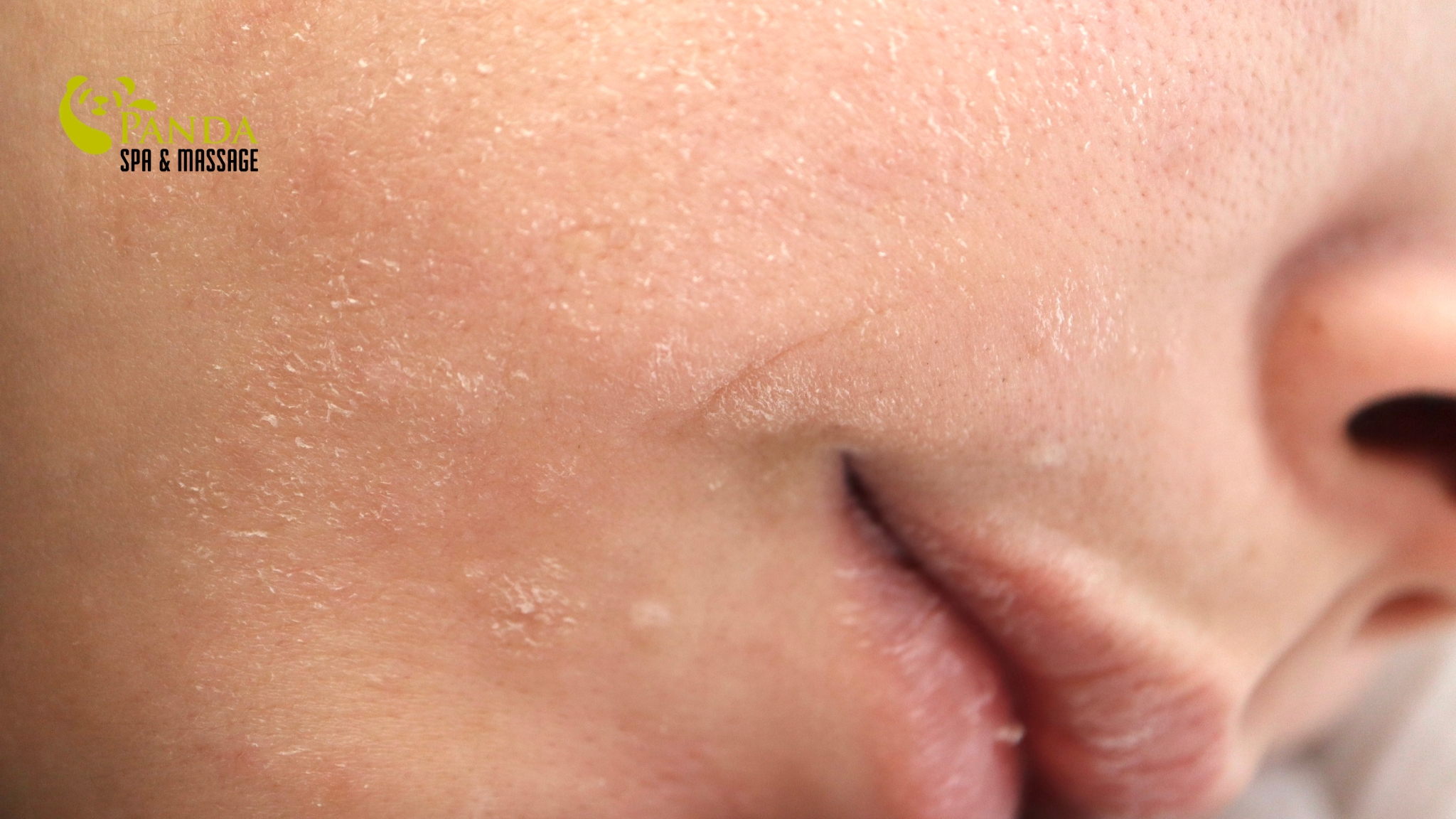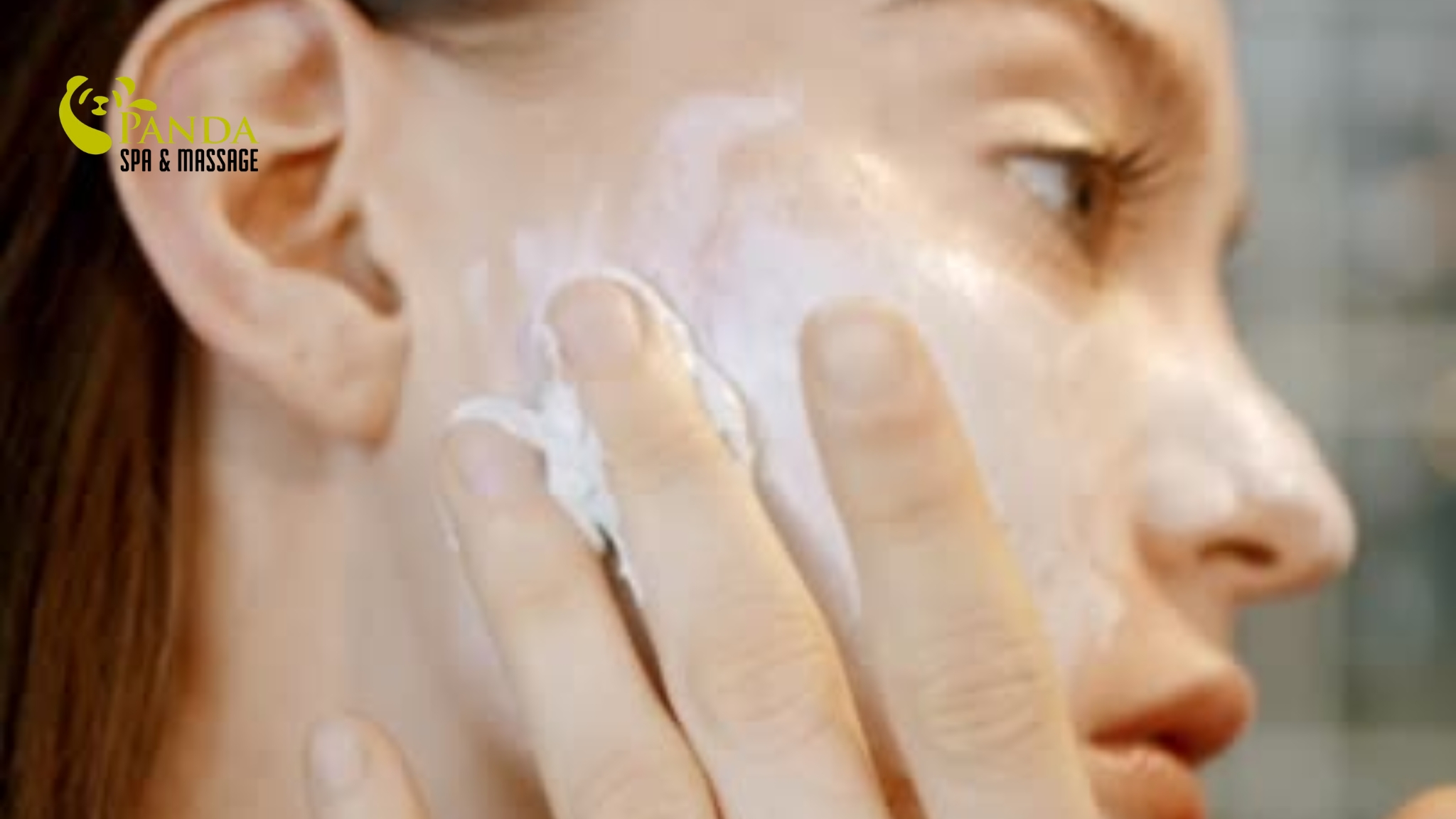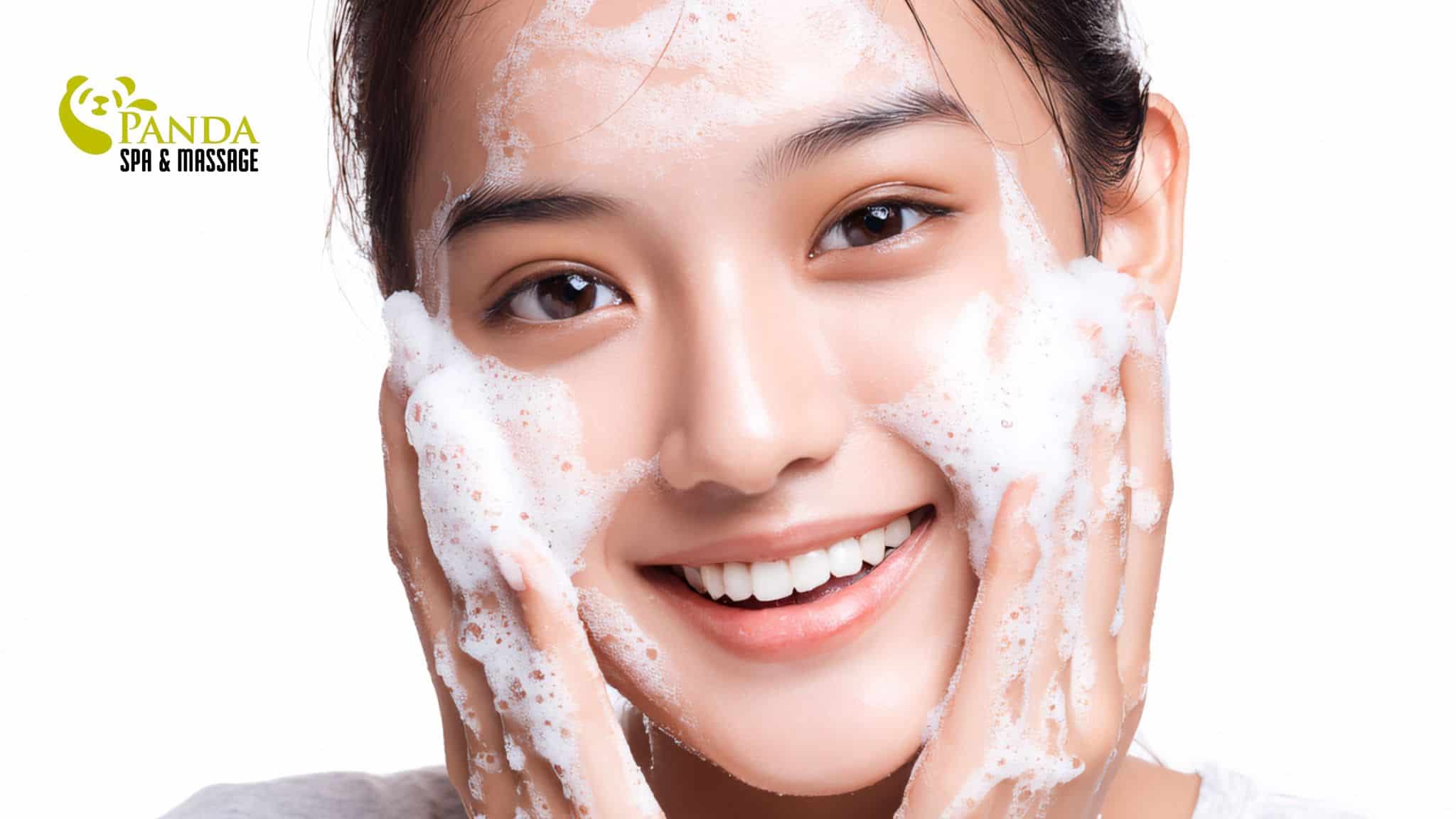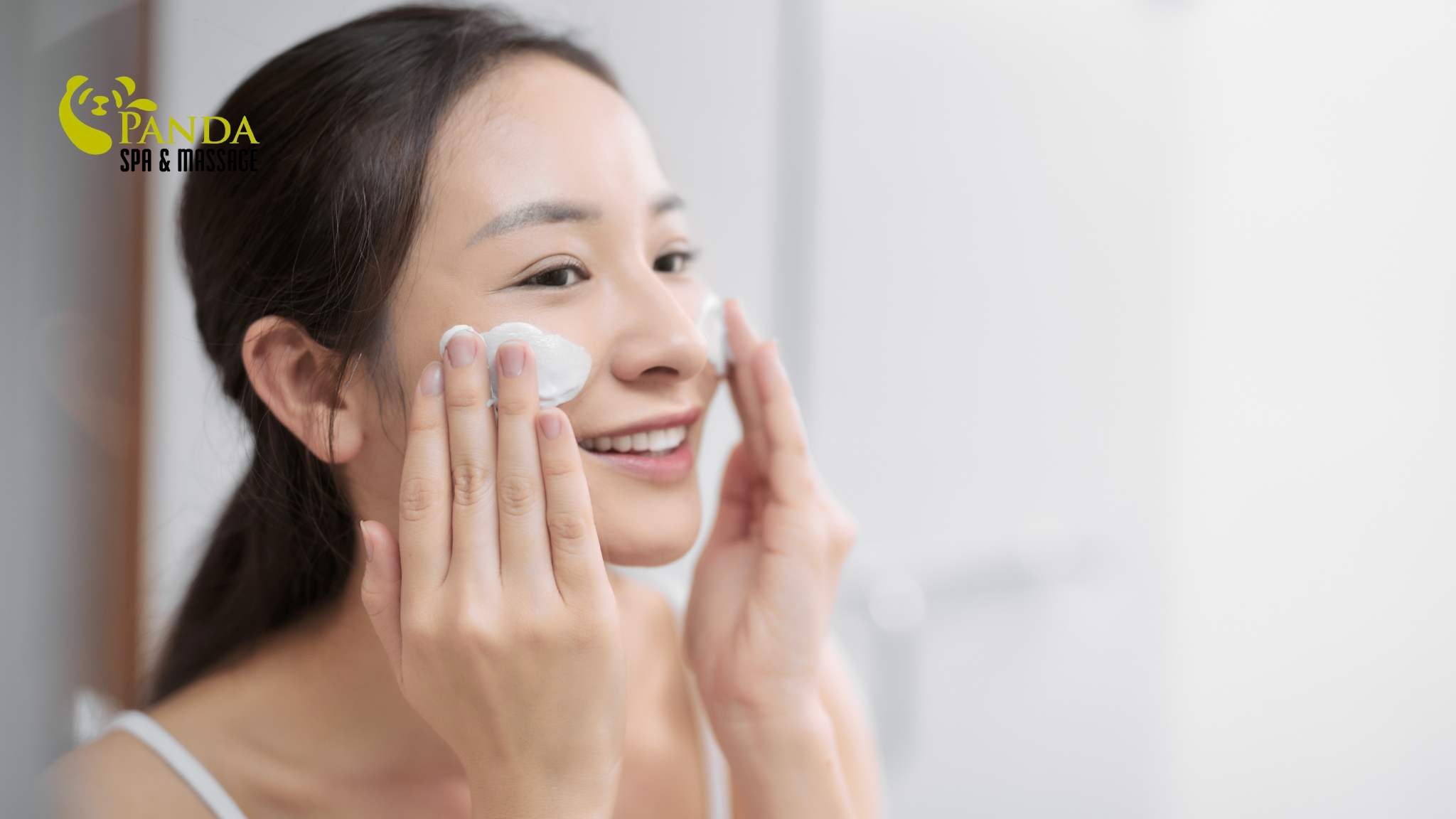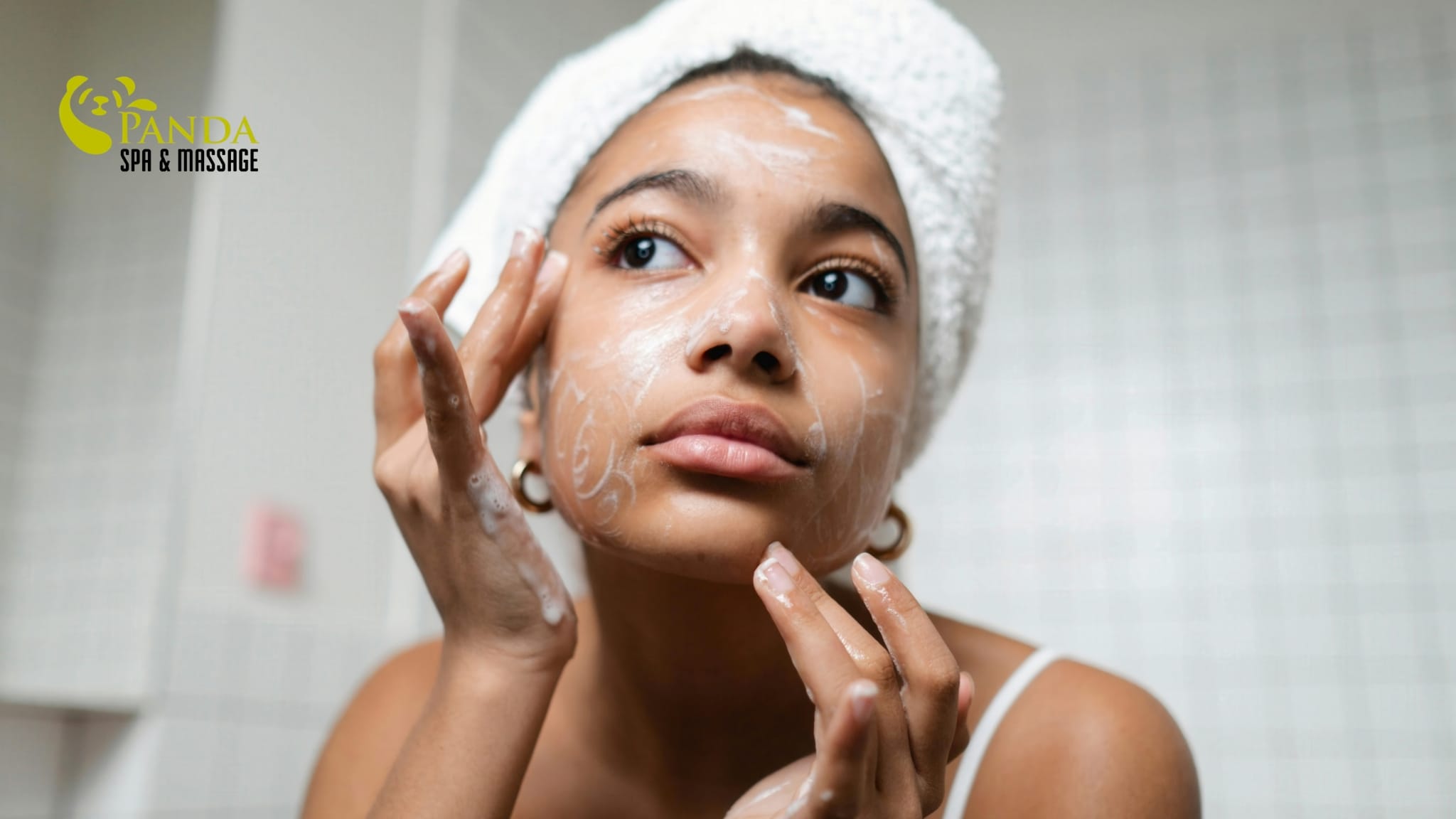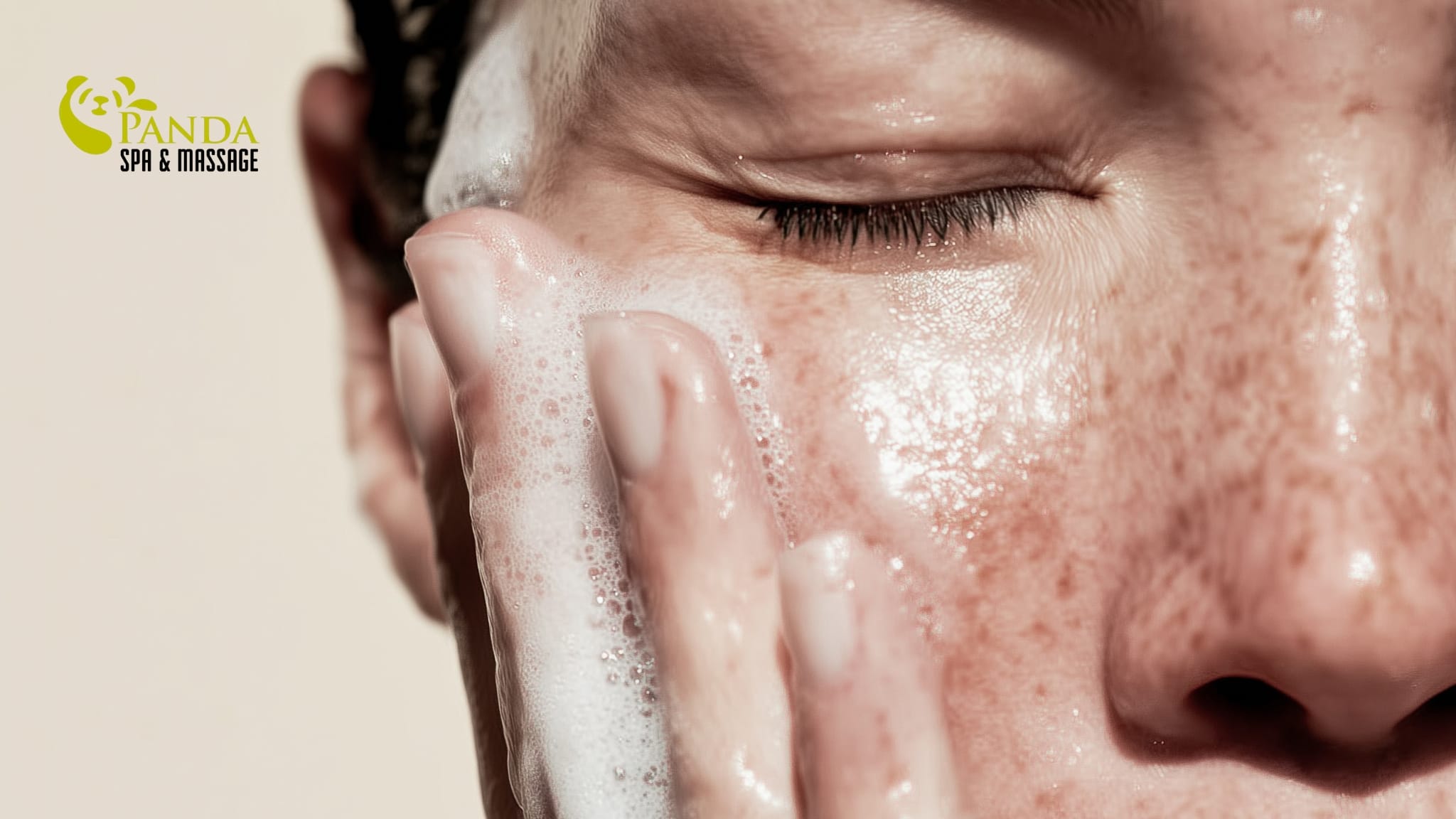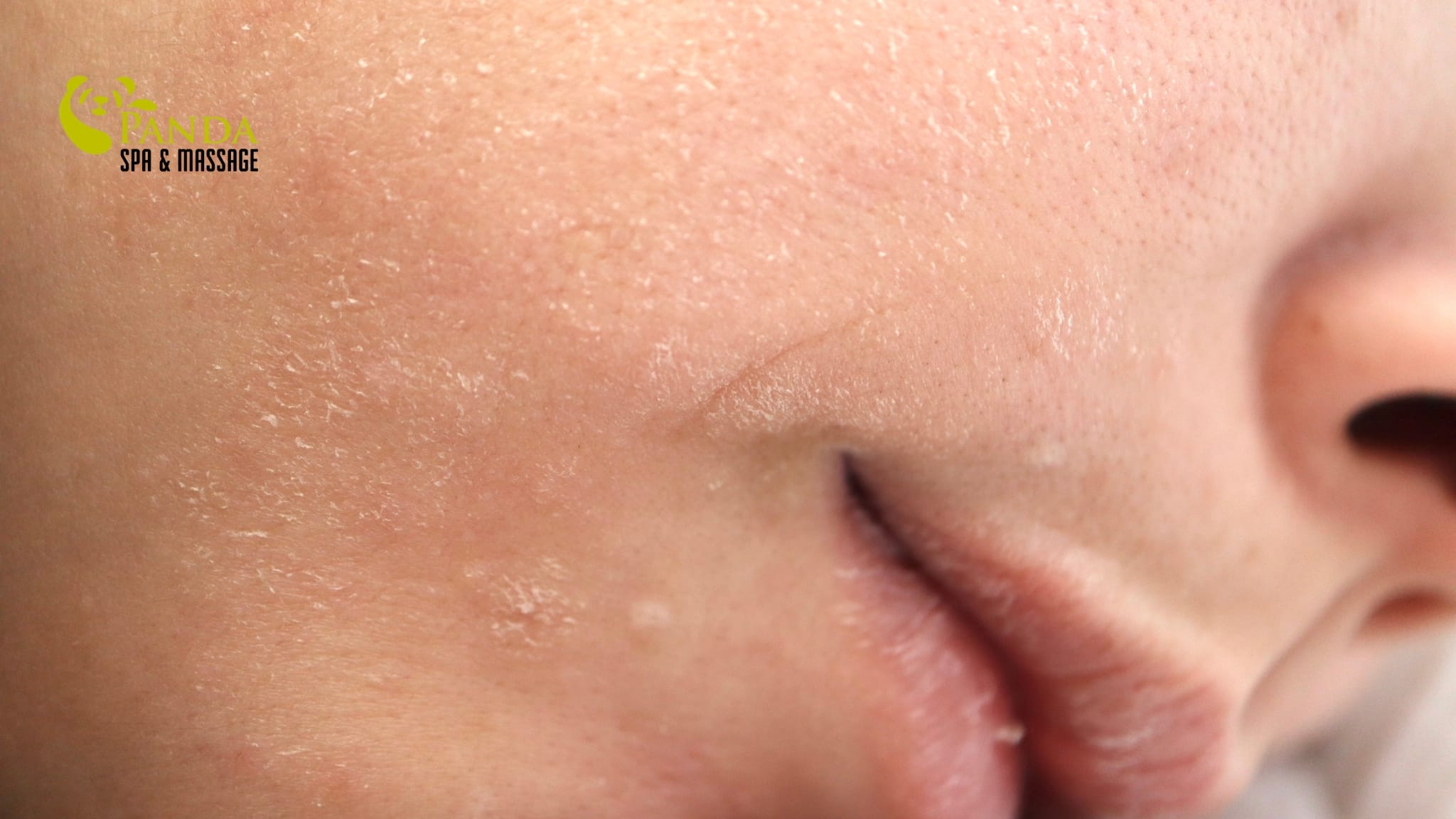Guide to Proper Foot Massage at Home Effectively
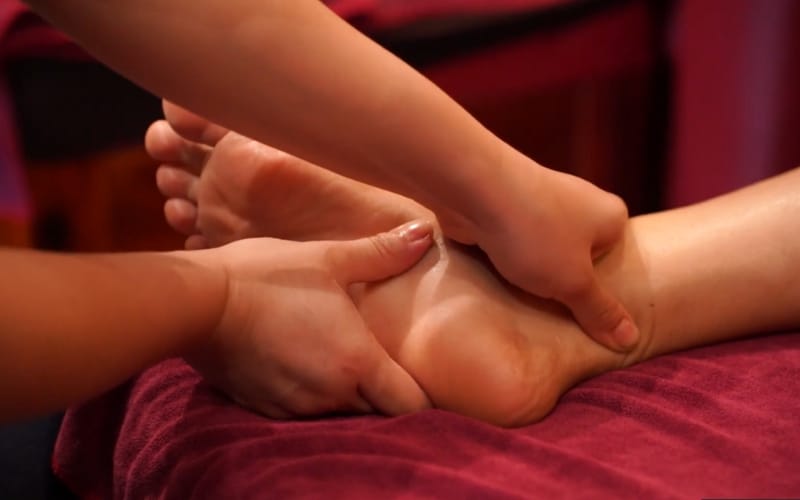
A detailed foot massage guide can be the key to relieving fatigue, restoring energy, and improving overall health right at home. Your feet, which bear the body’s weight all day long, deserve special care. Understanding this, Panda Spa will share a professional, easy-to-follow massage process to transform your familiar space into a luxurious relaxation haven.
1. Essential Preparations Before Starting
To maximize the effectiveness of the massage, preparation is crucial. This step sets the foundation for complete physical and mental relaxation, ready to receive the deep therapeutic benefits outlined in this foot massage guide.

Essential Preparations Before Starting
1.1. Step 1: Soak Your Feet in Warm Water with Herbs to Soften Muscles
Before starting any foot massage guide, soaking your feet is an essential first step. Prepare a basin of warm water (about 38-42°C), ensuring it’s not too hot to avoid burns. You can add Epsom salt to relieve muscle soreness, or natural herbs like crushed ginger for warmth, mugwort leaves for joint pain relief, or a few drops of lavender essential oil for relaxation.
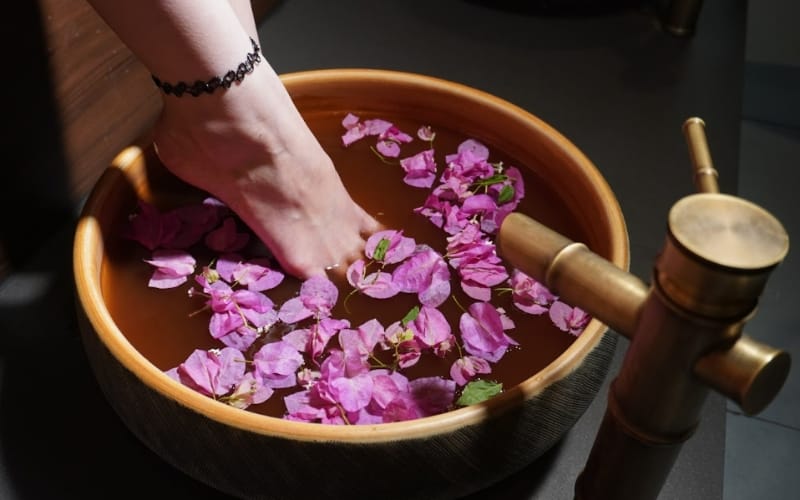
Step 1: Soak Your Feet in Warm Water with Herbs to Soften Muscles
Soak your feet for 10-15 minutes. This process not only cleanses your feet but also softens hardened muscles and skin, dilates blood vessels, and improves circulation. Once the muscles are relaxed, performing the massage techniques in this foot massage guide becomes much easier and more effective.
1.2. Step 2: Prepare Massage Oil and a Relaxing Environment
Massage oil acts as a lubricant, allowing smooth hand movements on the skin, preventing friction and injury. You can use natural base oils like coconut oil, olive oil, or almond oil. For added benefits, mix in a few drops of your favorite essential oil.
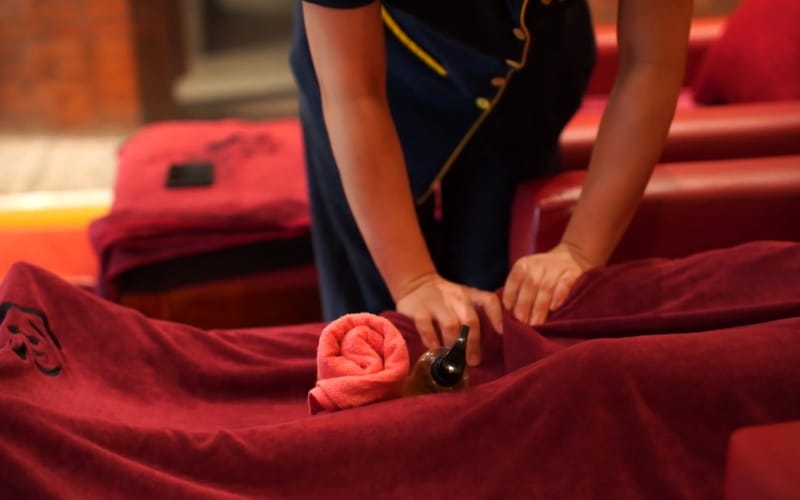
Step 2: Prepare Massage Oil and a Relaxing Environment
The environment also plays a critical role in the experience. Choose a quiet space with soft lighting and a comfortable room temperature. Playing soothing instrumental music can help relax your mind completely. Thorough preparation is the foundation of a successful foot massage guide, giving you the feel of a professional spa foot massage technique.
2. Detailed Foot Massage Steps
After completing the preparations, we move to the core of this foot massage guide with sequential steps to ensure effectiveness and relaxation throughout.
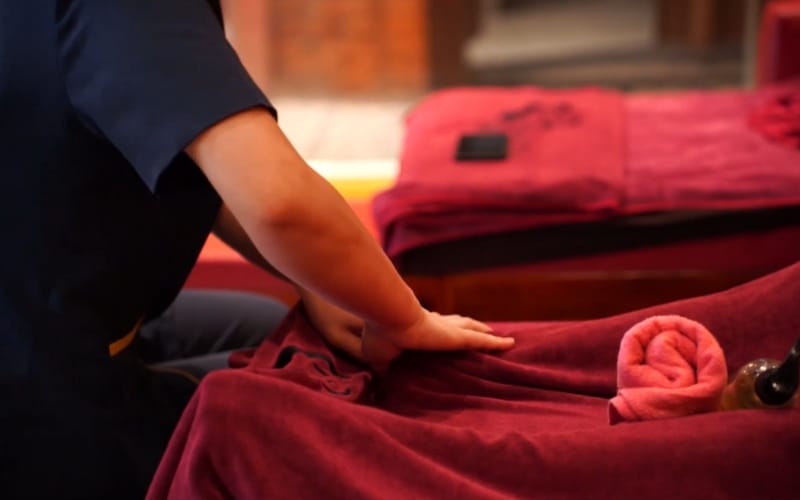
Detailed Foot Massage Steps
2.1. Step 3: Warm-Up – Overall Foot Rub to Warm the Feet
Dry your feet after soaking, sit comfortably, and place one foot on the opposite thigh. Apply a small amount of massage oil to your palms, rub them together to warm the oil, and begin with gentle rubbing across the entire foot—a fundamental technique in any professional foot massage guide.
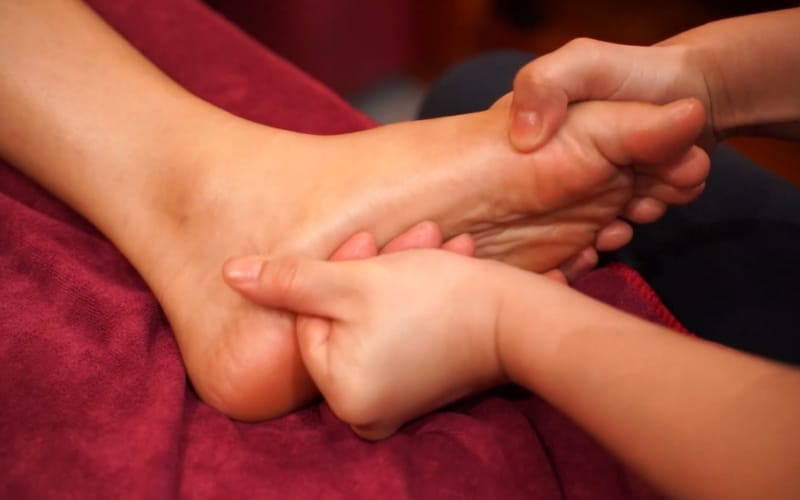
Step 3: Warm-Up – Overall Foot Rub to Warm the Feet
Use your palms and fingers to perform long, firm strokes from the toes to the ankle and back. This motion evenly distributes the oil while warming the foot’s muscles and skin, signaling the nervous system that the relaxation process is about to begin. Continue for 1-2 minutes until the foot feels warm. This step prepares the muscles for deeper techniques.
2.2. Step 4: Deep Massage of the Foot Arch
The arch of the foot, where many acupressure points are located, requires special attention and is the focus of this foot massage guide. Place both thumbs side by side in the center of the arch. Press and knead from the heel toward the toes with moderate pressure, ensuring it’s firm but not painful.

Step 4: Deep Massage of the Foot Arch
Next, use one thumb to knead in circular or zigzag motions across the arch to release tense muscles. A common spa foot massage technique involves using the knuckles of the index finger, loosely clenched, to apply stronger pressure from the heel to the ball of the foot. This relieves accumulated stress from walking or standing, providing instant relief.
2.3. Step 5: Kneading, Stroking, and Gently Pulling Each Toe
The toes, often neglected, contain many important nerve endings. Use your index finger and thumb to grip one toe, gently kneading around the joint connecting the toe to the foot. Then, stroke along the length of the toe from base to tip.
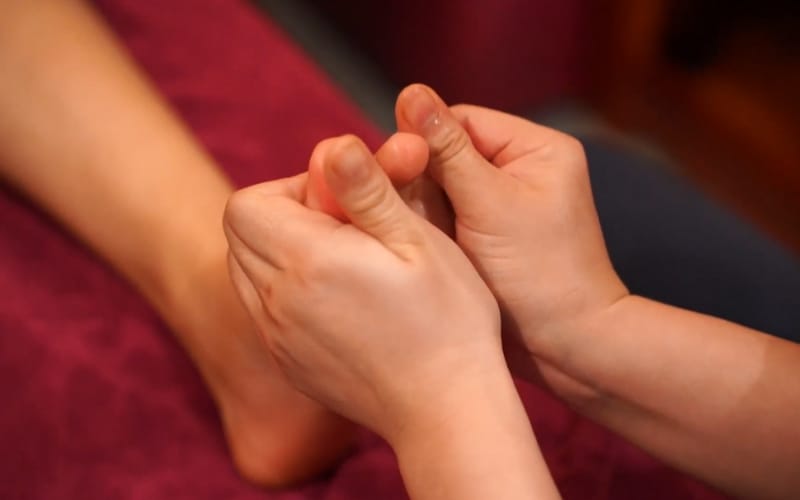
Step 5: Kneading, Stroking, and Gently Pulling Each Toe
Finally, gently pull the tip of the toe outward. Repeat this 2-3 times for each toe, from the big toe to the pinky. Thoroughly massaging each toe enhances flexibility and stimulates acupressure points related to the head and senses like eyes and ears, making it an essential part of any professional foot massage guide for comprehensive relaxation.
2.4. Step 6: Massaging the Heel and Rotating the Ankle
The heel, which endures significant pressure and often develops calluses, requires firm attention. Cup the heel with your palm and knead in circular motions. You can also use your knuckles to press deeper into callused areas. Then, hold the heel lightly with one hand, grip the toes with the other, and slowly rotate the ankle.
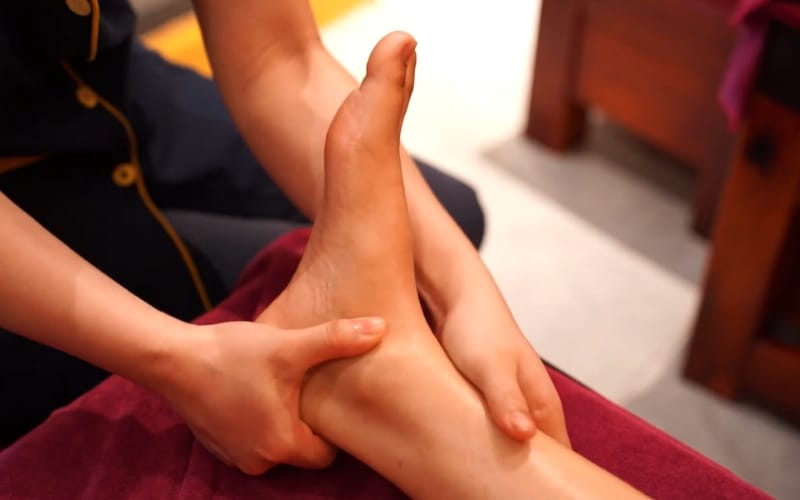
Step 6: Massaging the Heel and Rotating the Ankle
Rotate clockwise for 5-7 cycles, then counterclockwise. This ankle rotation, a key technique in the foot massage guide, restores flexibility, lubricates the joint, and relieves energy blockages, benefiting those with fatigue or minor ankle injuries.
2.5. Step 7: Relaxing the Top of the Foot and Concluding the Session
After deep massage, conclude with gentle relaxation techniques. Use your fingertips to lightly stroke from the toe joints to the ankle, repeating several times, focusing on the spaces between the bones on the top of the foot. Then, cup the entire foot with both hands and gently pat all over.

Step 7: Relaxing the Top of the Foot and Concluding the Session
Finally, wrap the foot in a warm towel for 1-2 minutes to lock in relaxation and enhance oil absorption. Repeat steps 3 to 7 for the other foot. A complete session following this foot massage guide will leave your feet feeling light and your body energized.
3. Key Tips for Safe and Effective Massage
To ensure the massage is beneficial and safe, keep these important tips in mind when following this foot massage guide.
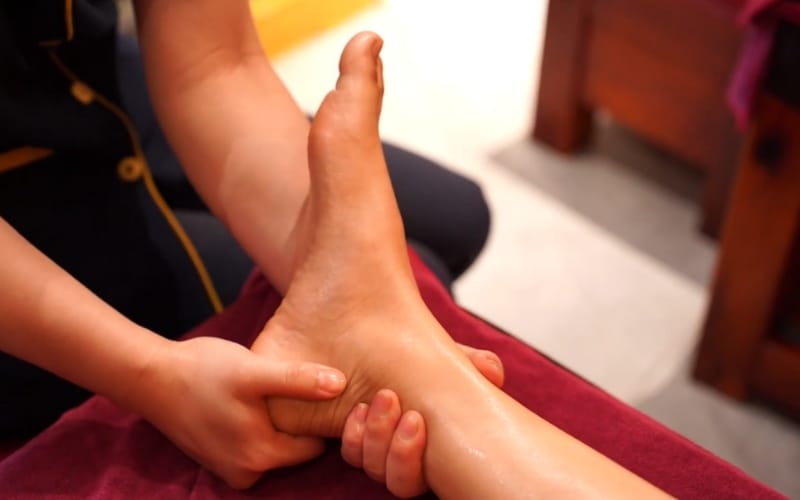
Key Tips for Safe and Effective Massage
3.1. Proper Yongquan Acupressure Technique for Enhanced Benefits
The Yongquan acupoint, one of the body’s most important points, is located in the depression under the foot’s arch, at the upper third of the sole. Properly stimulating this point can improve sleep, reduce fatigue, and enhance kidney function.
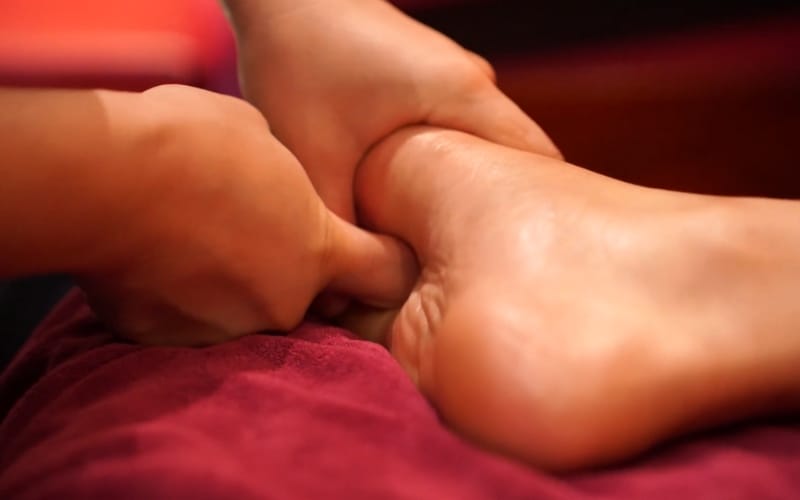
Proper Yongquan Acupressure Technique for Enhanced Benefits
To locate it, curl your foot and toes; the deepest depression is the Yongquan point. When following this foot massage guide, press the point with your thumb using moderate pressure, hold for 5-10 seconds, then release slowly. Repeat 10-15 times. Avoid pressing too hard to prevent pain. Following this foot massage guide for acupressure can yield surprising health benefits.
3.2. How Often Should You Massage?
Massage frequency is a key factor emphasized in every professional foot massage guide. The body needs time to rest and recover. The ideal frequency depends on your health and needs.
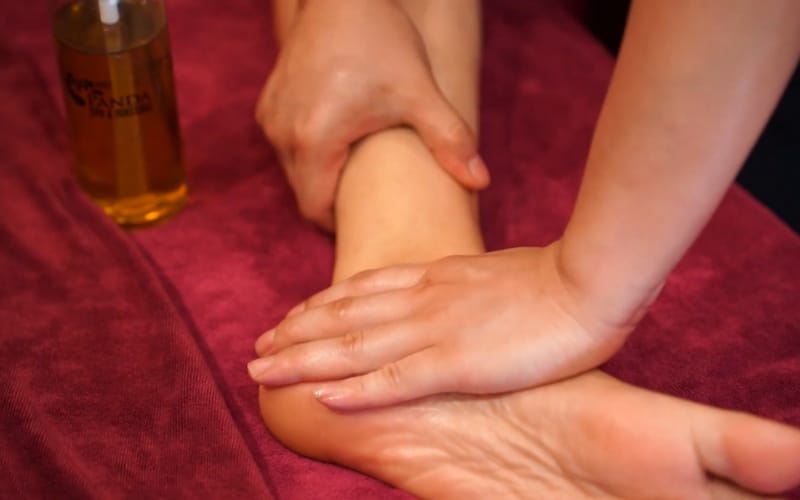
How Often Should You Massage?
For healthy individuals seeking relaxation, daily or every-other-day massages of 15-20 minutes per foot are ideal. For those with soreness or insomnia, daily massages before bed can be highly effective. If you experience prolonged discomfort after massaging, reduce to 2-3 times a week with lighter pressure. Listening to your body is the most important principle in any foot massage guide.
3.3. Who Should Avoid Foot Massage to Prevent Risks?
While this foot massage guide is safe for most people, certain individuals should exercise caution or avoid it. Those with open wounds, ulcers, skin infections, or foot fungus should not follow this foot massage guide to prevent worsening conditions or spreading bacteria.
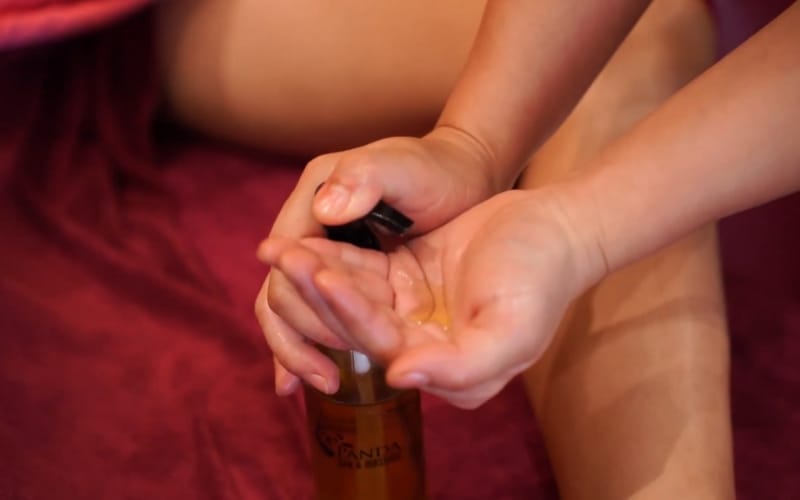
Who Should Avoid Foot Massage to Prevent Risks?
Pregnant women, especially in the first trimester, should consult a doctor, as stimulating certain acupoints may affect the fetus. Individuals with severe varicose veins, deep vein thrombosis, or those on anticoagulants should avoid the techniques in this foot massage guide. Additionally, avoid massaging right after a heavy meal or during a high fever. Recognizing these contraindications is critical.
4. Conclusion: Care for Your Feet, Boost Your Health
Regularly following this foot massage guide is a simple yet highly effective way to care for your health. We hope that with the detailed guidance from Panda Spa, you can confidently perform this relaxing routine at home, bringing relief to your feet and a refreshed spirit every day.
See more: Foot massage danang
———————————————————————CONTACT NOW
Hotline: 038.3967.775 / 070.818.5397
Email: booking@pandaspa.vn
Messenger: Panda Spa Da Nang
Kakao Talk: Panda Spa Da Nang
Naver: Panda Spa Da Nang
Tripadvisor: Panda Spa & Massage In Danang City
Address 1: 229 Nguyen Van Thoai, Son Tra – Da Nang
Address 2: 225 Nguyen Van Thoai, Son Tra – Da Nang
